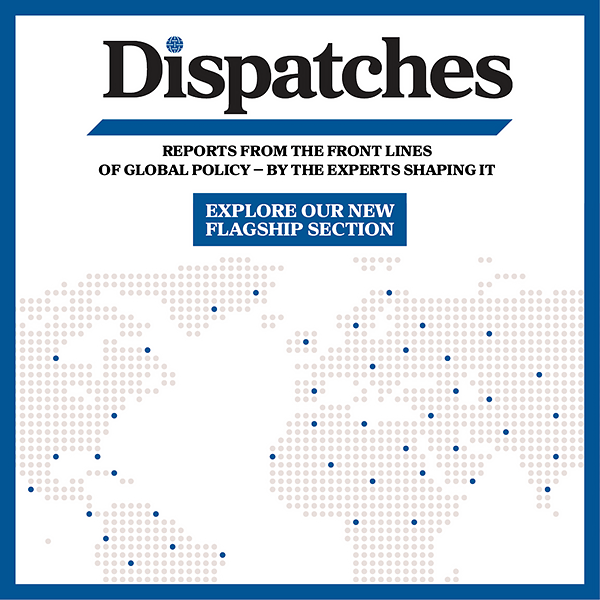How the US can balance Qatar’s mediation role with the fight against terrorist financing
In the wake of the Israeli strike on Hamas leadership in Doha in September and a fragile subsequent ceasefire between the two, US officials face the challenge of determining what to expect out of a partner such as Qatar. A country roughly the size of Connecticut and flush with natural-gas wealth, Qatar has attempted, with some success, to mold itself into a mediator—or in some cases a meddler—in international affairs. Qatar has achieved an outsized role on the global stage, but the spotlight has come with persistent scrutiny of the tiny Gulf country’s efforts to counter the financing of terrorism (CFT) regime.
Qatar’s partnership with the United States on CFT has improved markedly in recent years, with achievements that both countries can tout. Qatar has been part of the Terrorist Financing Targeting Center—a counter-illicit finance organization made up of the United States and six Gulf countries—since the center’s inception, designating financiers and facilitators associated with a host of terrorist organizations. Qatari authorities also took coordinated action with the United States in 2021 against a Hezbollah financing network—no small feat for a country that shares the world’s largest gas field with Iran.
Yet that CFT track record remains spotty. Qatar has hosted Hamas officials, including Khaled Mashal, for over a decade and allegedly failed to stop the Taliban from profiting handsomely from World Cup construction projects. The country has faced criticism for years that it creates a permissive environment for terrorists to store, use, and move funds.
The strength of any country’s CFT regime depends on both technical capacity and willingness. Despite its small size, Qatar has improved its technical capacity in recent years to work alongside the United States and others to identify and disrupt illicit finance. In 2019, for instance, Qatar passed a necessary overhaul of its anti-money laundering and CFT framework, bringing the country’s regime in line with international standards. But Qatar’s fiercely independent foreign policy, which the United States has at times used to its advantage, puts its willingness to cooperate into question at times.
Qatar’s hedging isn’t purely opportunistic, however. It’s partly a survival tactic. Wedged between Saudi Arabia and Iran, with a population smaller than most US cities, Qatar must maintain relationships with actors across the ideological spectrum to preserve its independence and strategic autonomy.
The same positioning that makes Qatar an imperfect partner on CFT and sanctions also makes it uniquely valuable as a diplomatic intermediary and strategic ally. Qatar hosts Al Udeid Air Base, the largest US military installation in the Middle East and a critical hub for US operations across the region. The country is clearly important for US security interests despite its complex diplomatic balancing act. Qatar also has facilitated Taliban negotiations that led to the US withdrawal from Afghanistan, hosted preliminary talks between the United States and Iran, mediated prisoner exchanges involving American hostages, and provided crucial back-channel communication with groups and countries that Washington cannot or does not want to engage directly.
This reality forces US policymakers to confront an uncomfortable strategic question: Is more consistent CFT cooperation worth losing one of the United States’ few channels to adversaries such as Iran and nonstate actors? The answer is likely no, but not at any cost.
The challenge for Washington is how to structure its partnership to maximize Qatar’s diplomatic utility while minimizing the impact on the United States’ highest priority CFT and sanctions concerns. Qatar made its name on the world stage precisely by being a platform for sensitive mediations and back-channel conversations with the United States’ most difficult adversaries. If Washington wants to preserve this unique asset to help navigate the most intractable foreign policy challenges, it may need to accept the tradeoffs that come with Qatar’s carefully calibrated independence. Tolerating permissiveness on CFT in exchange for diplomatic utility may be a bargain the United States is willing to strike when it comes to Qatar.
But US policymakers should also use this moment to reevaluate whether the current balance is serving the country’s foreign policy interests—and more clearly define and communicate CFT redlines for the United States, particularly related to groups such as Hamas. That will require meaningful thought as to what those redlines should be, or the United States risks continued ambiguity that has allowed Hamas’s Doha-based leadership to enrich itself. The United States should not be shy in making its expectations clear, especially considering the precarious Gaza ceasefire in place. While Qatar has made progress addressing some illicit finance risks, more could be done to push Qatari authorities to institute tighter controls to prevent money from being siphoned off for Hamas activities, increase investigations—with US cooperation—into the sources of Hamas funding, and limit the group’s ability to operate freely in Doha without repercussions.
Lesley Chavkin is a nonresident senior fellow at the Atlantic Council’s Economic Statecraft Initiative and currently works at Ribbit Capital.
Related content

Housed within the GeoEconomics Center, the Economic Statecraft Initiative (ESI) publishes leading-edge research and analysis on sanctions and the use of economic power to achieve foreign policy objectives and protect national security interests.
Image: The flag of Qatar pinned on the map. Horizontal orientation. Macro photography.



